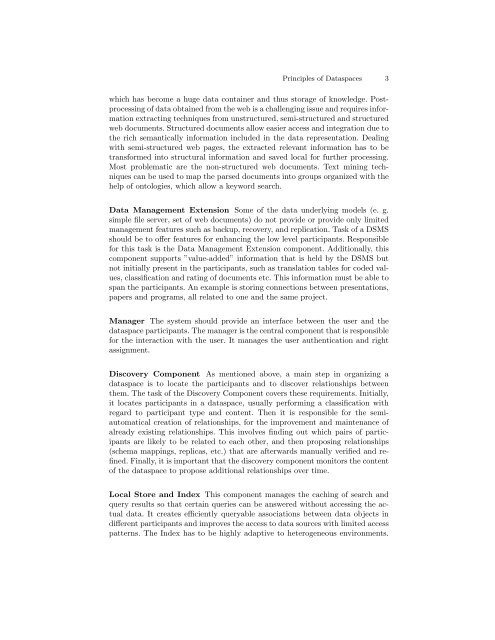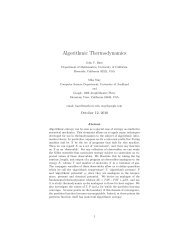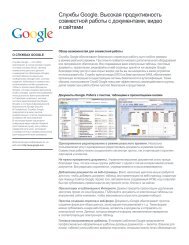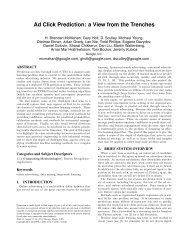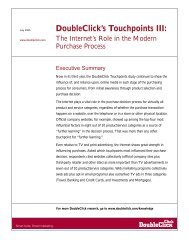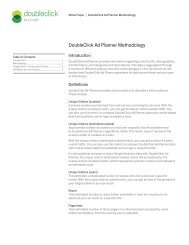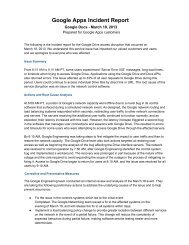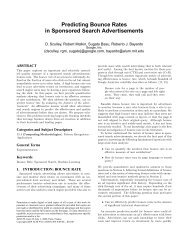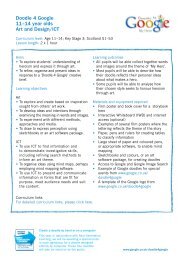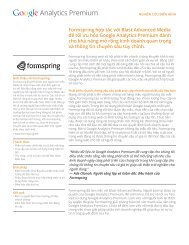Principles of Dataspaces
Principles of Dataspaces
Principles of Dataspaces
You also want an ePaper? Increase the reach of your titles
YUMPU automatically turns print PDFs into web optimized ePapers that Google loves.
<strong>Principles</strong> <strong>of</strong> <strong>Dataspaces</strong> 3which has become a huge data container and thus storage <strong>of</strong> knowledge. Postprocessing<strong>of</strong> data obtained from the web is a challenging issue and requires informationextracting techniques from unstructured, semi-structured and structuredweb documents. Structured documents allow easier access and integration due tothe rich semantically information included in the data representation. Dealingwith semi-structured web pages, the extracted relevant information has to betransformed into structural information and saved local for further processing.Most problematic are the non-structured web documents. Text mining techniquescan be used to map the parsed documents into groups organized with thehelp <strong>of</strong> ontologies, which allow a keyword search.Data Management Extension Some <strong>of</strong> the data underlying models (e. g.simple file server, set <strong>of</strong> web documents) do not provide or provide only limitedmanagement features such as backup, recovery, and replication. Task <strong>of</strong> a DSMSshould be to <strong>of</strong>fer features for enhancing the low level participants. Responsiblefor this task is the Data Management Extension component. Additionally, thiscomponent supports ”value-added” information that is held by the DSMS butnot initially present in the participants, such as translation tables for coded values,classification and rating <strong>of</strong> documents etc. This information must be able tospan the participants. An example is storing connections between presentations,papers and programs, all related to one and the same project.Manager The system should provide an interface between the user and thedataspace participants. The manager is the central component that is responsiblefor the interaction with the user. It manages the user authentication and rightassignment.Discovery Component As mentioned above, a main step in organizing adataspace is to locate the participants and to discover relationships betweenthem. The task <strong>of</strong> the Discovery Component covers these requirements. Initially,it locates participants in a dataspace, usually performing a classification withregard to participant type and content. Then it is responsible for the semiautomaticalcreation <strong>of</strong> relationships, for the improvement and maintenance <strong>of</strong>already existing relationships. This involves finding out which pairs <strong>of</strong> participantsare likely to be related to each other, and then proposing relationships(schema mappings, replicas, etc.) that are afterwards manually verified and refined.Finally, it is important that the discovery component monitors the content<strong>of</strong> the dataspace to propose additional relationships over time.Local Store and Index This component manages the caching <strong>of</strong> search andquery results so that certain queries can be answered without accessing the actualdata. It creates efficiently queryable associations between data objects indifferent participants and improves the access to data sources with limited accesspatterns. The Index has to be highly adaptive to heterogeneous environments.


